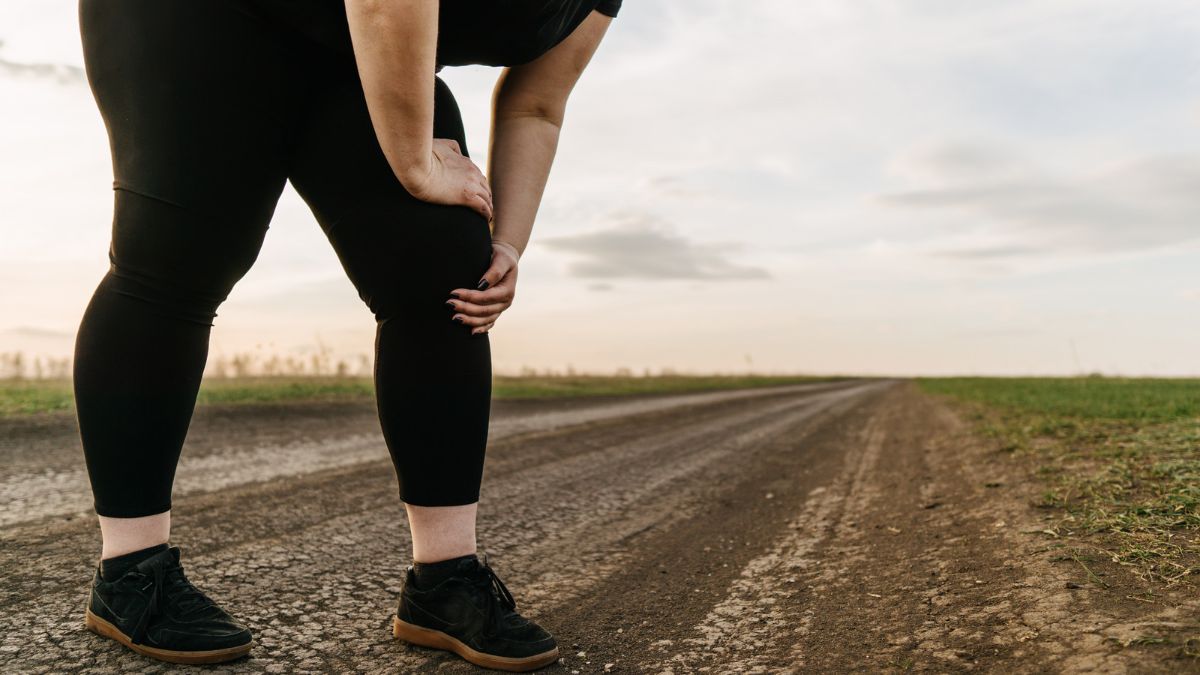Key Takeaway: You can relieve knee pain from being overweight by losing weight, eating a healthy diet, and doing low-impact exercises.
Knee pain is one of the most common complaints among people who are overweight or obese. According to a study, 19.5% of people with grade 2 obesity (BMI of 35-39.9) have osteoarthritis (OA) of the knee, compared to only 3.7% of people with a healthy weight (BMI of 18.5-25).
Knee pain can limit your mobility, affect your quality of life, and increase your risk of other health problems. But don’t worry, there are ways to relieve knee pain from being overweight and prevent further damage to your joints. 😊
The best way to relieve knee pain from being overweight is to lose some weight. Losing weight can reduce the pressure on your knees, lower the inflammation in your body, and improve your metabolic health. Even a small amount of weight loss can make a big difference. For example, losing 10 pounds can reduce the load on your knee joint by 40 pounds. That means less wear and tear on your cartilage and less pain and stiffness in your knees.
But how can you lose weight safely and effectively? The key is to combine a healthy diet with regular exercise. A healthy diet can help you control your calorie intake, nourish your body, and prevent overeating. You should eat foods that are rich in protein, fiber, vitamins, minerals, and antioxidants, such as fruits, vegetables, whole grains, lean meats, nuts, seeds, and low-fat dairy products. You should avoid foods that have added sugar, fat, and salt, are highly processed, or contain saturated and trans fats.
Regular exercise can help you burn calories, strengthen your muscles, improve your mood, and lower your risk of many diseases. But what kind of exercise is good for people with knee pain? You should avoid exercises that put too much stress on your knees, such as running, jumping, or squatting. Instead, you should choose exercises that are low-impact, gentle, and easy to do.
Here are some examples of exercises that you can try:
- Up and downs: Sit in a firm, armless chair with your feet flat on the floor and your arms crossed or loose at your sides. Slowly stand up without using your arms for support. Then slowly sit back down. Repeat 10 times.
- Hamstring stretch: Sitting at the edge of your chair, straighten one leg out in front of you with your heel on the floor and your toes pointed towards the ceiling. Keep your back straight and lean forward slightly until you feel a stretch in the back of your thigh. Hold for 15 seconds and then switch legs. Repeat 3 times on each side.
- Calf raises: Stand behind a chair or a wall for balance. Lift your heels off the floor and stand on your toes. Hold for a few seconds and then lower your heels back down. Repeat 10 times.
- Calf stretch: Stand facing a wall with one foot in front of the other. Keep both feet flat on the floor and lean forward with your hands on the wall until you feel a stretch in the back of your lower leg. Hold for 15 seconds and then switch legs. Repeat 3 times on each side.
- Leg lifts: Lie on your back with one leg bent and one leg straight. Tighten the muscles in your straight leg and lift it about 6 inches off the floor. Hold for a few seconds and then lower it back down. Repeat 10 times and then switch legs.
- Side leg lifts: Lie on your side with both legs straight. Lift your top leg about 12 inches off the floor. Hold for a few seconds and then lower it back down. Repeat 10 times and then switch sides.
- Bridges: Lie on your back with both knees bent and feet flat on the floor. Squeeze your buttocks and lift your hips off the floor until you form a straight line from your shoulders to your knees. Hold for a few seconds and then lower your hips back down. Repeat 10 times.
These exercises can help you strengthen the muscles around your knee, improve your flexibility, and reduce pain and swelling. You should do them at least three times a week for best results. You can also add some moderate-intensity aerobic activity to your routine, such as brisk walking, cycling, or swimming. Aim for at least 150 minutes per week.
As a weight loss coach, I want to help you achieve your goals and improve your health. I know that living with knee pain can be challenging and discouraging, but I also know that you can overcome it with determination and perseverance. You have the power to change your body and your life for the better. You just need to take the first step and commit to making positive changes. I’m here to support you along the way and cheer you on as you progress. Together, we can make it happen! 💪
And if you have more general questions about weight loss, please visit here: General Weight Loss FAQs.
So, what do you think? How do you cope with knee pain from being overweight? Do you want to lose weight or maintain your current weight? What are some of the challenges or barriers that you face? Let me know in the comments below. I’d love to hear from you and answer any questions you may have. 😊

